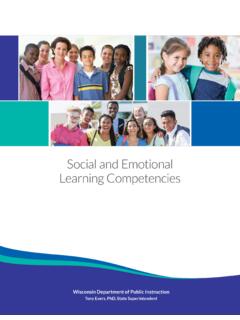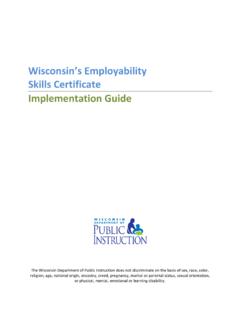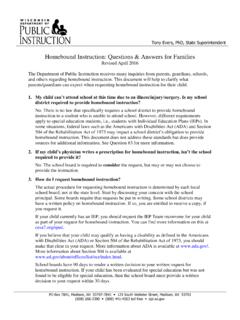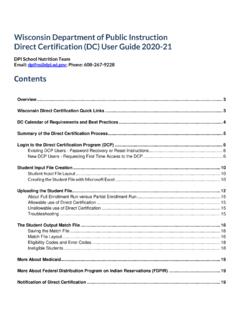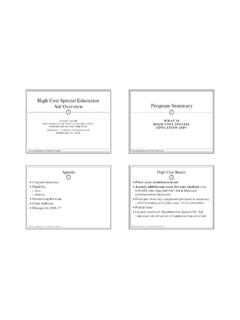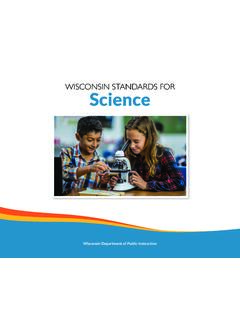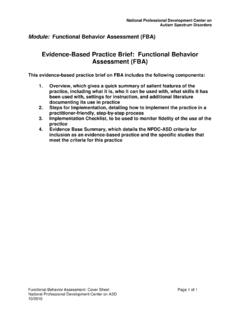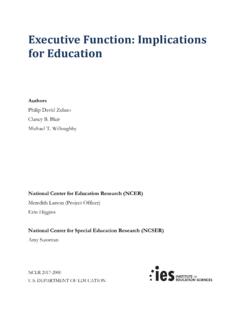Transcription of Educational Evaluation Guide for Autism
1 Educational Evaluation Guide For Autism Spring 2009 Wisconsin Department of Public Instruction Elizabeth Burmaster, State Superintendent 2 THESE MATERIALS DEVELOPED BY: Pam Foegen, Former Autism Consultant Marge Resan, Former Autism Consultant Wisconsin Department of Public Instruction ACKNOWLEDGEMENTS Special thanks and appreciation to the following individuals whose contribution of expertise and time in July, 2008 made this document possible: Kelly Brodhagen, Parent and Wisconsin Assistive Technology Initiative Program Assistant, CESA #6 Lisa Dillhunt, Autism Program Support Teacher, Green Bay Area Public Schools Cynthia Kieck, Pre K-5 Pupil Service Team Leader, School District of South Milwaukee Laurie Miller, Autism Program Support Teacher, Fond du Lac School District Susan Stokes, Autism Consultant, CESA #6 Jude Teicher, Autism Consultant, CESA #2 Susan Volz Nett, Autism Program Support Teacher, Madison Metropolitan School District Additionally, special thanks to the following individuals who contributed to the initial draft of these materials: Wisconsin Department of Public Instruction.
2 Sandy Berndt, Cognitive Disabilities Consultant Pat Bober, Occupational Therapy Consultant Lynn Boreson, Emotional Behavioral Disabilities Consultant Sheryl Thormann, Speech/Language Consultant Elizabeth Keenan, Former Director of Special Education, North Fond du Lac (WI) Schools Lisa Schreiner, Teacher, La Crosse (WI) Schools Michelle Sturz, Parent, Evansville, WI Thanks to those who provided feedback on the Fall 2007 draft of these materials: Autism Society of Wisconsin, Education Committee Carol Zarske, Executive Director of Special Education, CESA 6 Gary D. Cumley, Associate Dean, School of Communicative Disorders, UW-Stevens Point Julie LaBerge, Parent and Director of Special Education, Bonduel School District Laura Comer CESA 12 Julie Ellis Racine Mary Enright CESA 1 Colleen Fredelake Milwaukee Amy Hamin Wisconsin Rapids Joan Helbing Appleton Janet Hoelker Middleton-Cross Plains Tracy Hougum D.
3 C. Everest Karen Idso Eau Claire Carolyn Jahns DePere Amanda Jansen CESA 7 Barb Kilp Milwaukee April Knudson DePere Pat Konopka Oshkosh Tammy Lampereur Ashwaubenon Lisa Lesselyong Kimberly Veronica Milling Elkhorn Judi O Brien Appleton Judy Olm Fond du Lac Melissa Piette Wausau Mary Smith Manitowoc Mikki Valona Antigo Marcy Worzala Madison 3 TABLE OF CONTENTS Introduction 4 Wisconsin Eligibility Criteria for Autism 7 Analysis of the criteria 8 (8) ( a): Definition; Autism and EBD 8 (8) ( b) : Evaluation procedures 9 Tests and Checklists Observations Interviews (8) (b) 1: Social Participation 13 (8) (b) 2: Communication 15 (8) (b) 3: Developmental Rates & Sequences 17 (8) (b) 4: Cognition 18 (8) (b) 5: Sensory Processing 19 (8) (b) 6: Behavioral Repertoire 21 Need for Special Education 22 Appendices 25 A.
4 Evaluation Instruments - Examples 26 B. Eligibility Worksheet 31 C. Need for Special Education Worksheet 32 D. Bibliography and Resources 33 4 Introduction Autism spectrum disorders are: Developmental disabilities. Usually evident before age three. Neurological disorders. Autism is considered a spectrum disorder, meaning physical differences in the brains of individuals with Autism create Vastly differing neurological experiences; A wide continuum of symptoms; A range in severity; Wide variability among students. Autism spectrum disorders occur across all socioeconomic, ethnic, cultural and geographic groups. The incidence of Autism spectrum disorders is higher among males than females.
5 The purpose of this Guide is to provide information needed and processes to follow to determine whether a student meets the eligibility criteria for the Educational impairment area of Autism under the Individuals with Disabilities Education Act. Medical Diagnosis versus Educational Eligibility Determination Federal and state special education law use the categorical term Autism , which in special education practice may include students with medical diagnoses of Autism spectrum disorders such as: Autism , Pervasive Developmental Disorder Not Otherwise Specified (PDD-NOS), Asperger s Syndrome. NOTE: A medical diagnosis of an Autism spectrum disorder is not required in order to determine whether a student meets eligibility criteria for the Educational impairment area of Autism .
6 If medical information is available it should be considered as part of the Individual Evaluation Program (IEP) team s Evaluation but must not be the sole component. School personnel may not require parents to obtain a medical diagnosis of an Autism spectrum disorder before proceeding with an Educational Evaluation . IEP teams make Educational eligibility determinations, not medical diagnoses. Educational Eligibility Determination IEP teams conduct evaluations of students to determine eligibility for special education. The IEP team must determine whether the student meets the Educational impairment criteria and, as a result, needs special education services. NOTE: A medical diagnosis of an Autism spectrum disorder does not result in automatic eligibility for special education under the impairment area of Autism .
7 It is also possible for a student to have the Educational impairment of Autism but not need special education services. 5 When IEP teams evaluate students they must follow the required procedures and apply Wisconsin eligibility criteria found in Chapter PI 11 of the Wisconsin Administrative Code. All IEP team participants, including parents, are members of the team and must have an opportunity to meaningfully participate in the decision making process. Each IEP team must consist of the following: The parents of the child. At least one regular education teacher of the child if the child is, or may be, participating in a regular Educational environment. At least one special education teacher who has recent training or experience related to the child s known or suspected area of special education needs (in this case, Autism ) or, where appropriate, at least one special education provider of the child.
8 A representative of the local Educational agency (LEA) who is qualified to provide, or supervise the provision of, special education, is knowledgeable about the general curriculum and is knowledgeable about and authorized to commit the available resources of the LEA. An individual who can interpret the instructional implications of Evaluation results. At the discretion of the parent or the LEA, other individuals who have knowledge or special expertise about the child, including related services personnel as appropriate. Whenever appropriate, the child. If a child is attending school through open enrollment or a tuition waiver, at least one person designated by the resident district who has knowledge or special expertise about the child.
9 When a child is suspected or known to need occupational therapy, physical therapy, or speech and language therapy, a therapist in each respective area of service. The LEA representative role may be fulfilled by another member of the IEP team provided the individual meets the requirements to act in that capacity. The LEA should clearly identify on IEP forms which role(s) each IEP team member is fulfilling. The determination of whether an individual invited to the IEP team meeting by the parent or by the LEA has knowledge or special expertise about the child is made by the party inviting the individual. In addition to the legally required IEP team members, other school professionals are recommended participants on IEP teams conducting Educational Autism evaluations.
10 For example: Occupational therapists assess the effects of the environment and the demands of an activity on the student's ability to perform functional skills, such as the effects of noise or touch on social interaction. Physical therapists assess the student s motor skills. School nurses bring expertise to Evaluation of complex health needs. School psychologists provide important information about the student s social functioning, neurological functioning, developmental rates and sequences, etc. and are able to interpret the instructional implications of Evaluation results. School social workers provide insight into the student s developmental history and how the student functions and interacts in home, school and community environments.

